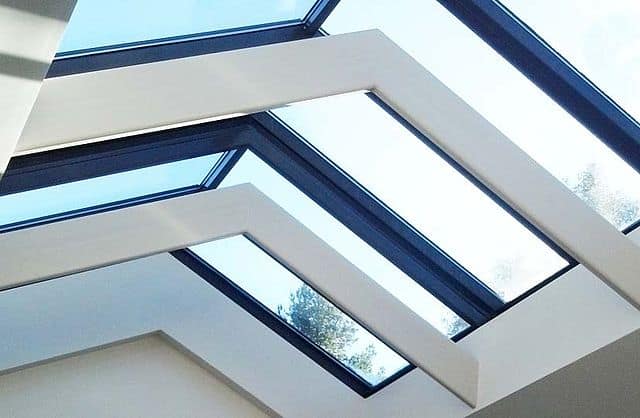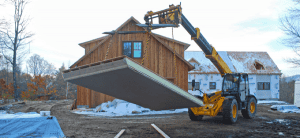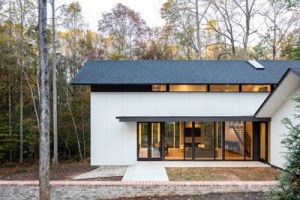There is little disagreement on the aesthetics of skylights in your home. The profusion of natural light spread throughout your indoor environment is virtually unmatched, as is the play of leaves and clouds like living pictures on your wall.
What IS up for debate, and has been for a long time, are the pros and cons of skylights, specifically with regards to energy efficiency.
The Pros of Skylights
Let’s start off with the easy stuff. Contemporary homes with flush or recessed skylights tend to make almost everyone smile. The health and emotional benefits of natural light are widely lauded, and the effects are almost instantaneous, as almost anyone who’s walked into a home awash with sunlight through to skylights can attest.
Rooms in the middle of your home that otherwise may not have a window, or rooms that face north, or are right up against a tree line, can come to life with skylights where natural light can be hard to come by.
Skylights also mean less need for electric lighting, especially in those north-facing or “landlocked” rooms and hallways. Placed thoughtfully, skylights can provide natural light in your home all day long, allowing you to keep those light switches turned off far longer.
Venting skylights are a great way to let fresh air into your home, creating incomparable air flow from your open windows to your skylights. Venting skylights also allow you to vent hot air that rises in your home and replace it with cooler air coming in from windows, lowering the temperature of your home naturally, making it more comfortable for everyone.
The Cons of Skylights
Now for the cons. First and foremost is the argument that as with any glass surface, there will be some amount of heat loss, especially in the winter when you are actively heating your home, and that heat is always rising to the highest point.
Skylights can also leak or create snow and ice build-ups on the roof above them if not installed properly. The risk alone is often enough to scare off architects and homeowners from considering skylights at all.
Skylights also have the potential to overheat your home in the summer when a bright, high sun can beat down for over 15 hours a day. Windows on the side of your home will invariably be out of the sun’s direct glare at some point as the sun moves across the sky, while skylights will see much more of the sun’s rays throughout the day.
Debunking the Myths
While it’s almost impossible to argue the pros of adding skylights to your new home, it’s rather easy to reject a few of the most pervasive cons.
Yes, skylights do create the potential for some amount of heat loss, but improvements in glass technology including triple glazing and UV protection, are making skylights more energy efficient every day. Beyond that, most skylights can be outfitted with automatic or manual shades that can combat heat loss when those winter nights turn especially cold.
It should also be noted that on those particularly sunny winter days, a few skylights can actually help heat your home, compensating in some part by reducing your energy costs during the day for what increase there may be overnight.
As far as leaks and ice build-up go, professional installation puts that argument to rest right away. If you hire a fly-by-night contractor to do your installation, by all means, worry! But if you work with professionals who guarantee their work and have the experience necessary to back that guarantee up, leaks should never be a concern at all.
Let the Light Shine In
For our part, we’d be hard pressed to try to convince you one way or another, but if you’re designing and building a new home, you will absolutely be considering light and windows, and the way that light will be treated in your design is essential to how you will live and grow in your new home. Beyond that, skylights provide unparalleled light, and add a natural beauty and serenity to your home that is often convincing enough.





